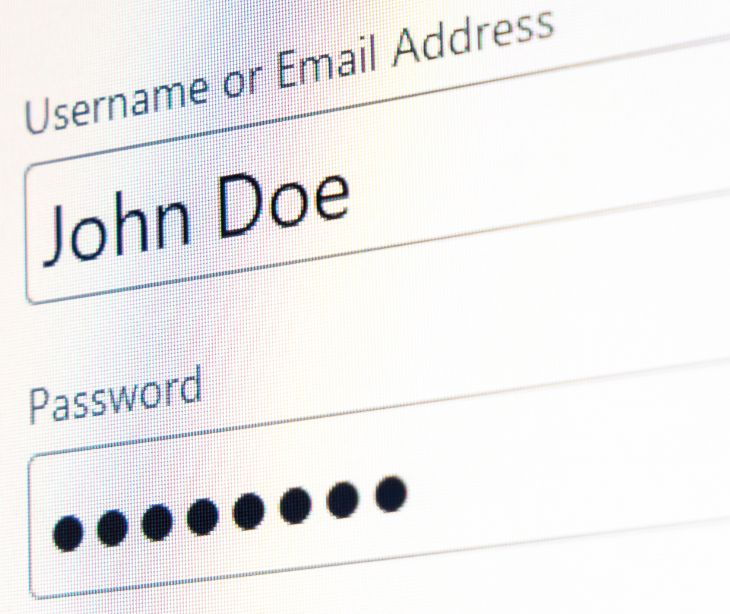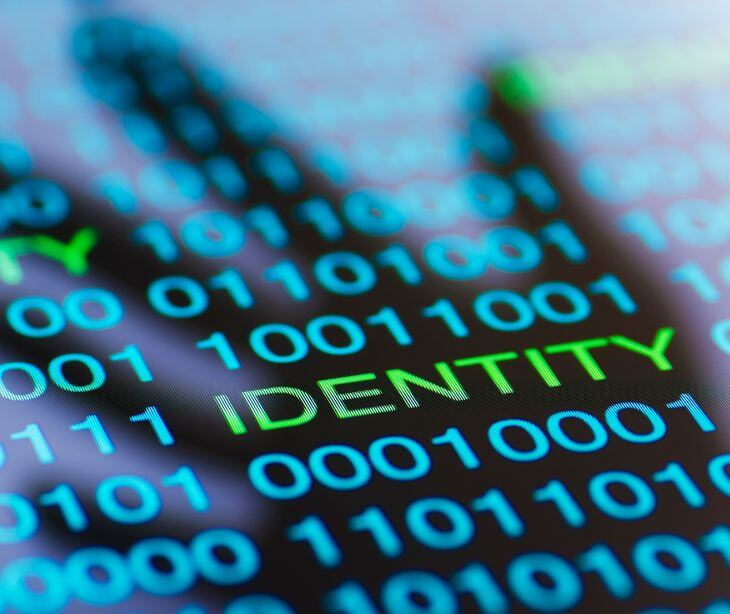
Credential harvesting is a cyberattack technique where malicious actors collect login credentials, typically usernames, passwords, and sometimes additional authentication information, from unsuspecting victims. Unlike brute force attacks that attempt to guess passwords through trial and error, credential harvesting relies on deception and social engineering to trick people into voluntarily surrendering their login information.
According to the U.S. Department of Health and Human Services Health Sector Cybersecurity Coordination Center (HC3), credential harvesting is often used as the initial step in more complex cyberattacks, enabling adversaries to obtain initial access, escalate privileges, exfiltrate sensitive data, or disrupt critical systems. Once harvested, these credentials become valuable commodities that can be exploited immediately, sold on dark web marketplaces, or stored for future attacks.
The scale of this threat has grown in recent years. According to the New Jersey Cybersecurity & Communications Integration Cell (NJCCIC), over the past three years, infostealer malware has increased, with threat actors compromising business and personal devices and exfiltrating millions of credentials, usually sold on dark web forums to other threat actors looking to compromise accounts or conduct further malicious activity.
\Approximately 90% of data breaches begin with phishing, and credential phishing accounted for 91% of active threat reports, according to Security Magazine reporting. The same article revealed a 67% increase in credential phishing attacks and a 104.5% increase in malicious emails bypassing secure email gateways (SEGs), with users receiving a malicious email every minute.
In his article "Credential Harvesting: Understanding and Combating the Threat," Matt Rider notes that "malware-free activity is the cause of nearly three-quarters of all attacks," and that "59% of respondents believed compromised accounts or credentials had resulted in a successful cyber attack in the previous 12 months." This shows how attackers bypass traditional security measures by using legitimate credentials.
The consequences of credential harvesting
The impact of successful credential harvesting extends beyond simple account access. For individuals, compromised credentials can lead to identity theft, financial fraud, unauthorized purchases, and the loss of personal data including private communications and photographs.
For organizations, harvested employee credentials provide attackers with legitimate access to corporate networks, enabling data breaches, intellectual property theft, and ransomware deployment. According to the NJCCIC, credential harvesting allows threat actors to compromise further accounts, escalate privileges, exploit vulnerabilities, move laterally within a network, deploy malware, and breach data. Data breaches can result in additional exposure or theft, leading to financial loss, reputational damage, and legal ramifications.
As Rider observes, once access has been granted, "the threat actor can start exfiltrating data, attempt to escalate their privileges, or introduce malware onto the compromised network." Without adequate detection capabilities, "victims can be left totally unaware that a breach has occurred."
A concerning trend involves ransomware groups leveraging harvested credentials for devastating attacks. The NJCCIC reports that the Akira ransomware group, which initially focused on Windows systems, is now targeting Linux machines—a preferred operating system for many server functions hosting critical applications and sensitive data, especially in finance, healthcare, government, and education. Initial access is gained through credential harvesting and a VPN service without MFA configured, mainly exploiting known Cisco vulnerabilities. Threat actors are adapting to the open-source nature of Linux to quickly analyze and exploit vulnerabilities, perform large-scale attacks, and maximize the likelihood of payment.
A single compromised credential can serve as the initial foothold for attacks that result in millions of dollars in losses, regulatory penalties, and irreparable reputation damage. The problem is amplified by credential reuse, many people use identical or similar passwords across multiple accounts. When credentials are harvested from one service, attackers attempt to use them across numerous other platforms through credential stuffing, potentially compromising dozens of accounts from a single harvest.
Protecting against credential harvesting
Defense against credential harvesting requires a multi-layered approach combining technology, awareness, and best practices:
Vigilance and verification
Always scrutinize unexpected emails, particularly those requesting login credentials or creating urgency. Verify sender addresses carefully, hover over links before clicking to inspect URLs, and when in doubt, navigate directly to websites through bookmarks or by typing the URL manually rather than clicking email links. HC3 emphasizes the importance of being reasonably skeptical and cautious when handling suspicious-looking emails and learning to recognize phishing attacks.
However, the challenge of user vigilance is reported by Rider that "only 2% of known attacks are reported by employees," showing the need for improved awareness and a culture where employees feel empowered to raise concerns. User vigilance includes "raising the alarm when they are suspicious about an email they have received or fear they may have clicked on a dangerous link."
The NJCCIC recommends participating in security awareness training to help better understand cyber threats, provide a strong line of defense, and identify red flags in potentially malicious communications. Security Magazine also advises security leaders to warn employees not to scan any QR codes of unknown sources, especially on company devices.
Password management
Using unique, complex passwords for every account eliminates the risk of credential reuse. Password managers simplify this process by securely generating and storing strong passwords, requiring users to remember only a single master password. HC3 specifically recommends using strong passwords that avoid personal details or anything easy to guess, and crucially, not reusing passwords across multiple accounts.
According to Security Magazine, security leaders should encourage employees to change their passwords regularly and discourage them from sending sensitive information over email, especially to someone outside of the organization.
Security awareness training
Organizations should invest in regular training that teaches employees to recognize phishing attempts, social engineering tactics, and suspicious communications. HC3 recommends educating the workforce to be reasonably skeptical and cautious when handling suspicious phone calls and websites, always ensuring they are submitting credentials to the proper site or application. Simulated phishing exercises help reinforce these lessons in practical scenarios.
Rider emphasizes that "given the ubiquitous use of email in the modern workplace, everyone is a potential target for those intent on credential harvesting. In this situation, effective user training has a huge role to play in lowering the risks, whether it's awareness of how phishing attacks work to ensuring people understand how to spot fake emails, no matter how convincing they might initially appear."
Technical safeguards
Email filtering systems, web security tools, and endpoint protection software can identify and block many credential harvesting attempts before they reach potential victims. HC3 specifically recommends email and malicious spam filtering, noting that filters can be deployed and properly configured to minimize the amount of unwanted traffic flowing into organizations.
The NJCCIC recommends installing endpoint security solutions to help protect against malware and implementing email filtering solutions, such as spam filters, to help block malicious messages. Additionally, utilizing endpoint security solutions can help detect and prevent malware-based credential harvesting techniques such as keylogging. Regular security updates and patches address vulnerabilities that attackers might exploit.
A research article titled "Threats Hidden in Office Network: Mechanism of Credential Harvesting for Lateral Movement" provides specific technical recommendations for enterprise environments:
- Deploy anti-virus scanning email attachments to catch malicious files before they reach users
- Disable NTLMv1 protocol to prevent attackers from forcing downgrade attacks to the less secure authentication protocol
- Disable WPAD protocol to prevent attackers from hijacking automatic proxy configuration systems
Vulnerability and patch management
According to HC3, keeping software and systems up-to-date with the latest security patches and updates can help address known vulnerabilities that attackers may exploit to harvest credentials. The NJCCIC echoes this recommendation, advising organizations to keep systems up to date and apply patches after appropriate testing. Maintaining a comprehensive and accurate inventory of all IT assets will improve the probability of success in this area.
Advanced detection and monitoring
Traditional security approaches are no longer sufficient for detecting credential-based attacks. Rider notes that "technologies such as traditional approaches to security incident and event management (SIEM)—which sift through an avalanche of alerts—are no longer adequate for detecting attacks."
Instead, he explains that "the most effective modern detection systems now combine Machine Learning (ML) with User and Endpoint Behaviour Analytics (UEBA) to assess and monitor normal behaviour for every user, device, and peer group connected to a network. In practical terms, this ensures that any behaviours that indicate user credentials have been compromised can be automatically detected and escalated to alert security teams in a timely manner."
Solutions like Paubox Inbound Email complement these behavioral monitoring technologies by providing email-specific threat protection at the gateway level. By using advanced detection capabilities that don't solely rely on known threat signatures, Paubox helps prevent credential harvesting attempts before malicious messages reach users, creating a first line of defense in a layered security strategy.
This approach helps overcome another limitation of traditional cybersecurity technologies, which "rely on knowing about a threat to address it." The widespread vulnerability to zero-day threats that are unknown to security systems underlines the risks presented by threat actors who are constantly inventing new approaches.
The HC3 emphasizes that real-time, event and incident analysis across an enterprise infrastructure can help identify credential harvesting attacks as they occur. The NJCCIC recommends utilizing monitoring and detection solutions to identify suspicious login attempts and user behavior. Leveraging appropriate tools and maintaining appropriately trained staff will improve this capability.
Incident response planning
Developing and maintaining a full-lifecycle incident handling and response program can minimize the impact of credential harvesting on operations. HC3 notes that this program should function closely with monitoring and detection capabilities to provide a comprehensive defense strategy.
FAQs
How do attackers typically use harvested credentials after obtaining them?
Attackers often sell them on dark web marketplaces, use them for further intrusions, or leverage them to escalate privileges within targeted networks.
Why do phishing and credential harvesting remain effective despite awareness campaigns?
Human error, evolving deception tactics, and convincing phishing designs make even trained users vulnerable.
What’s the difference between credential harvesting and credential stuffing?
Credential harvesting is about stealing login information, while credential stuffing uses already stolen credentials to access other accounts.
How do attackers choose which organizations or individuals to target?
They often prioritize those with valuable data, weak cybersecurity defenses, or large user bases, such as healthcare and financial institutions.
Can credential harvesting occur through mobile devices?
Yes. Mobile phishing links, fake apps, and malicious QR codes can all be used to harvest credentials from smartphones and tablets.
Subscribe to Paubox Weekly
Every Friday we'll bring you the most important news from Paubox. Our aim is to make you smarter, faster.




